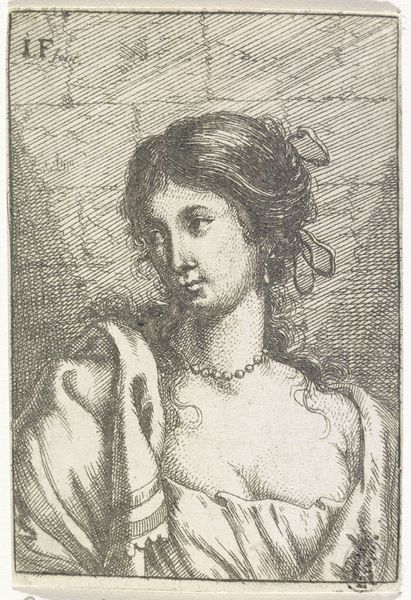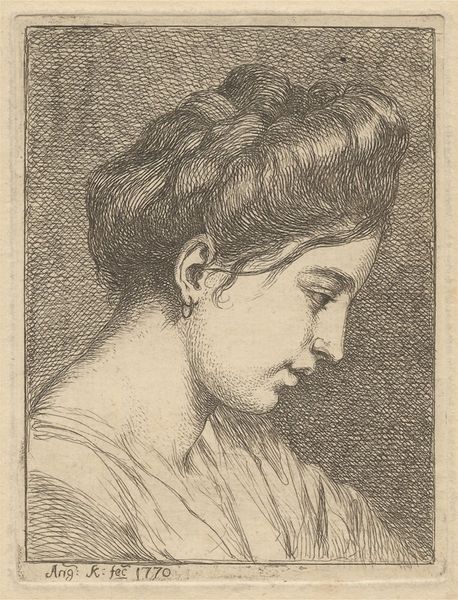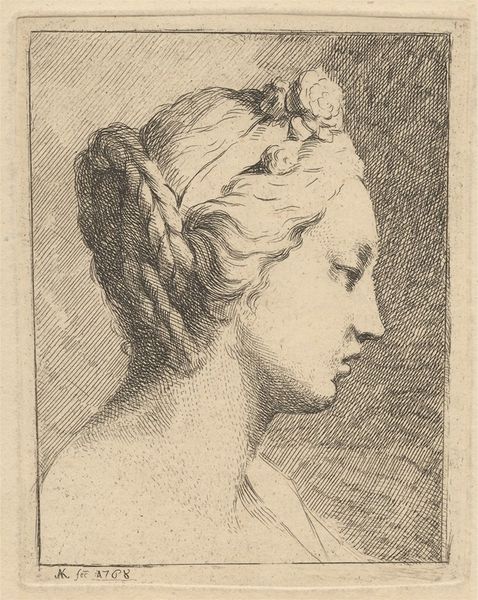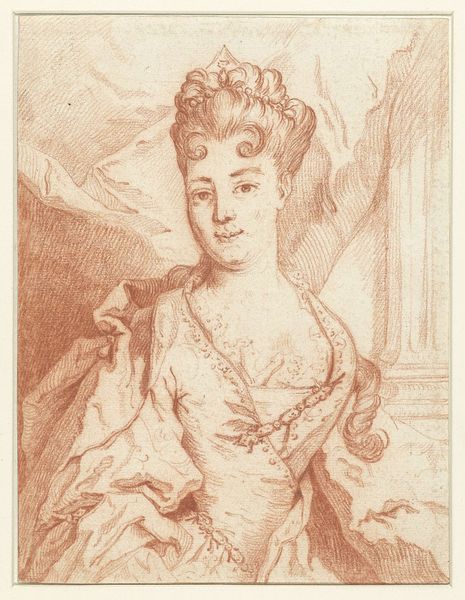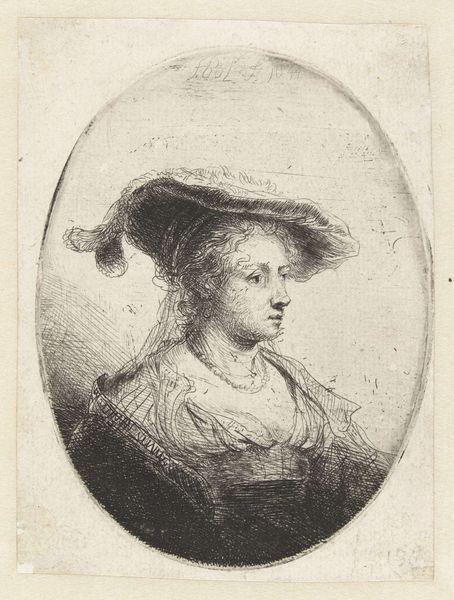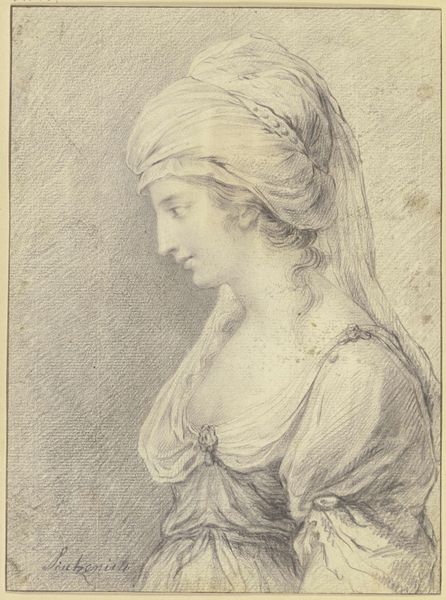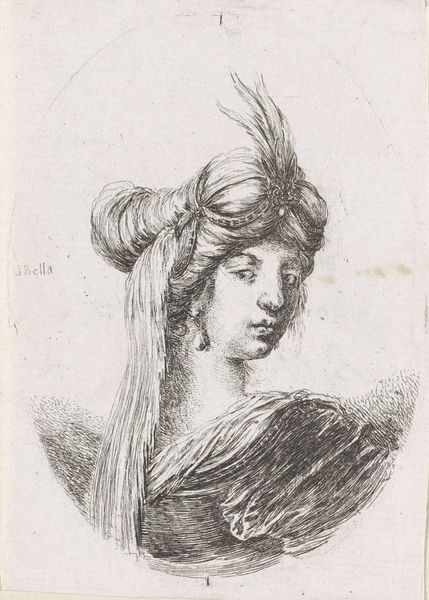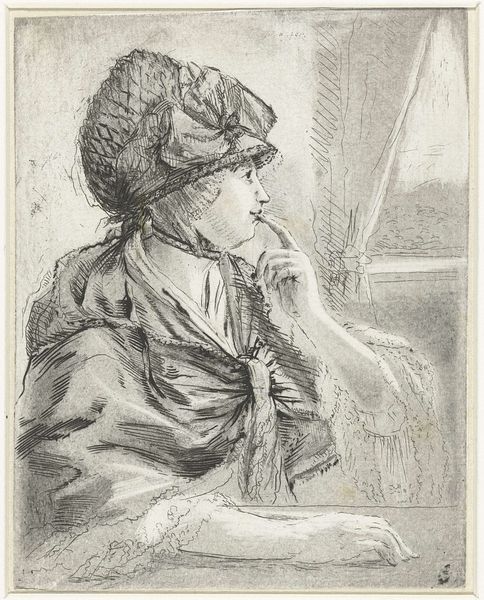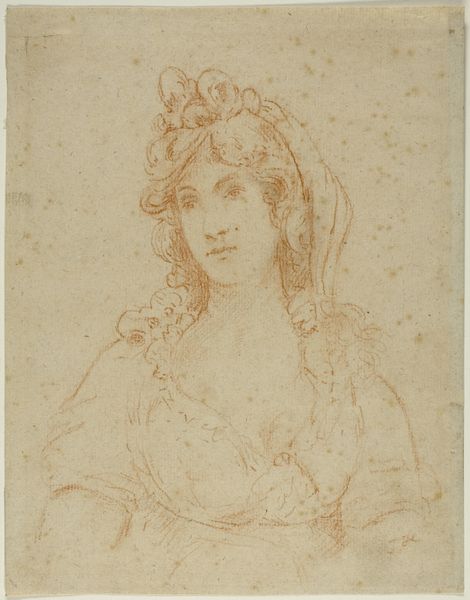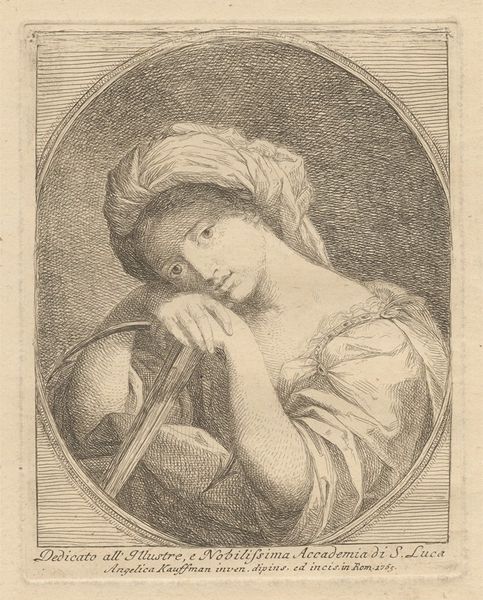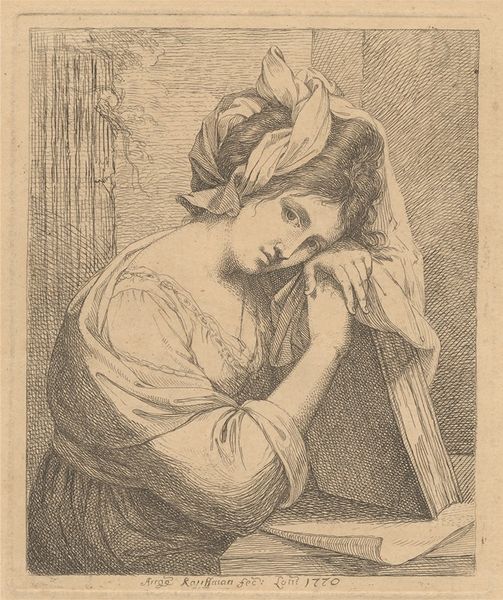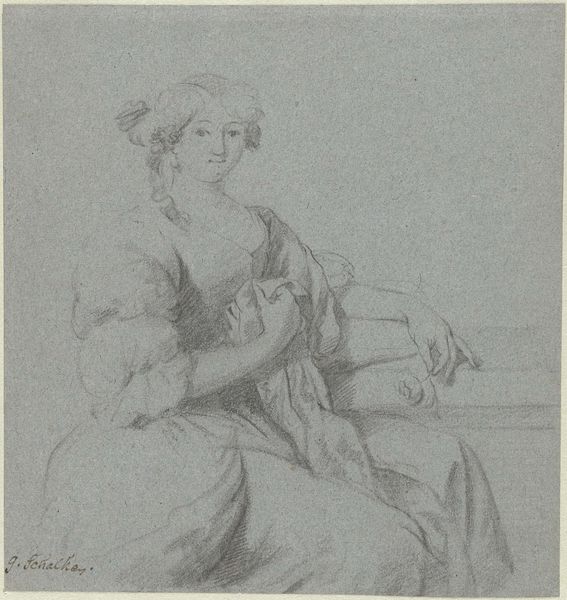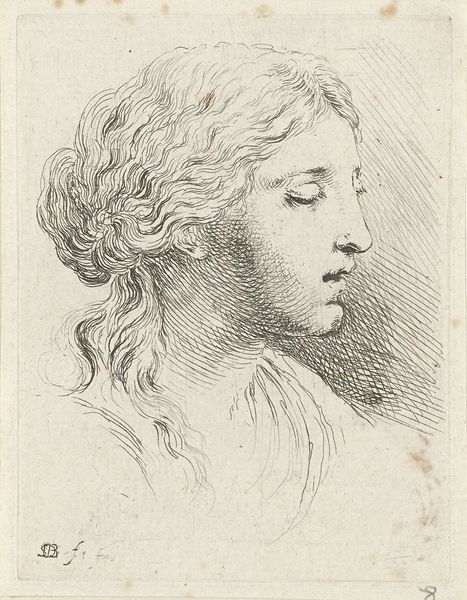
Copyright: Public Domain: Artvee
Editor: This is Angelica Kauffmann’s "Woman Weeping Beside an Urn," created in 1767. It looks like an engraving, a very delicate one at that. It gives a sombre feeling, with that figure lost in thought. What do you notice about the formal qualities? Curator: Initially, the most striking formal element is Kauffmann’s expert handling of line. Consider how she uses varied line weights and densities to create depth and shadow, despite the work's monochrome palette. Note, especially, the intricate details of the woman’s hair contrasted with the relative smoothness of her skin. Do you see how the cross-hatching intensifies in areas such as her draped clothing, building both volume and texture? Editor: I do. It's interesting how that technique really gives the piece dimension despite being a print. It also shows where the light is coming from. Curator: Precisely. The light source, seemingly from the upper left, sculpts her face and figure, accentuating her sorrowful expression. Kauffmann’s skill lies in using only line to achieve such expressive qualities, directing our gaze towards the focal point of her downcast eyes and hand against her face. Consider, too, the positioning of the figure relative to the urn - what relationship can you establish between these two visual elements, based on their structure? Editor: Well, her gaze seems to be fixated down, but not on the urn, more inward, and she sort of mirrors the urn's rounded shape...it makes me feel the work's sadness all the more! Thanks. Curator: Yes, by mirroring the urn's curves within the figure's posture, it brings an additional layer of depth and consideration to the piece, uniting formal structure to evoke deeper meaning. A very poignant, graceful gesture of artistic sensibility to decode a tragic, if timeless, narrative!
Comments
No comments
Be the first to comment and join the conversation on the ultimate creative platform.
